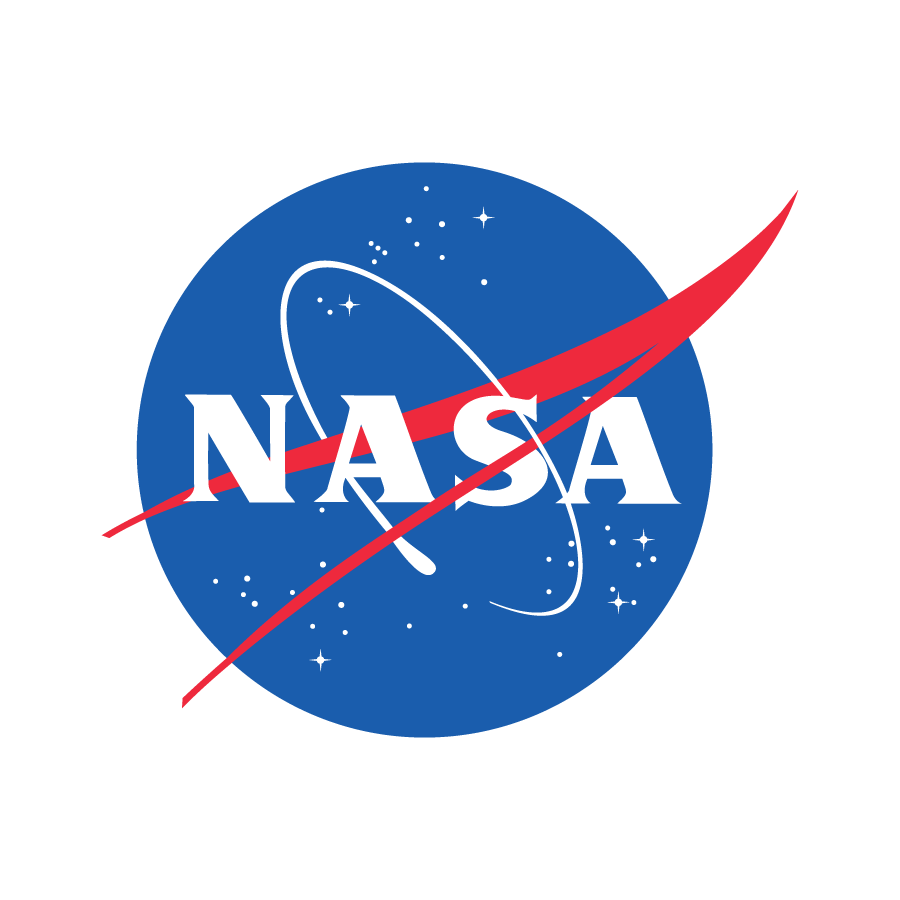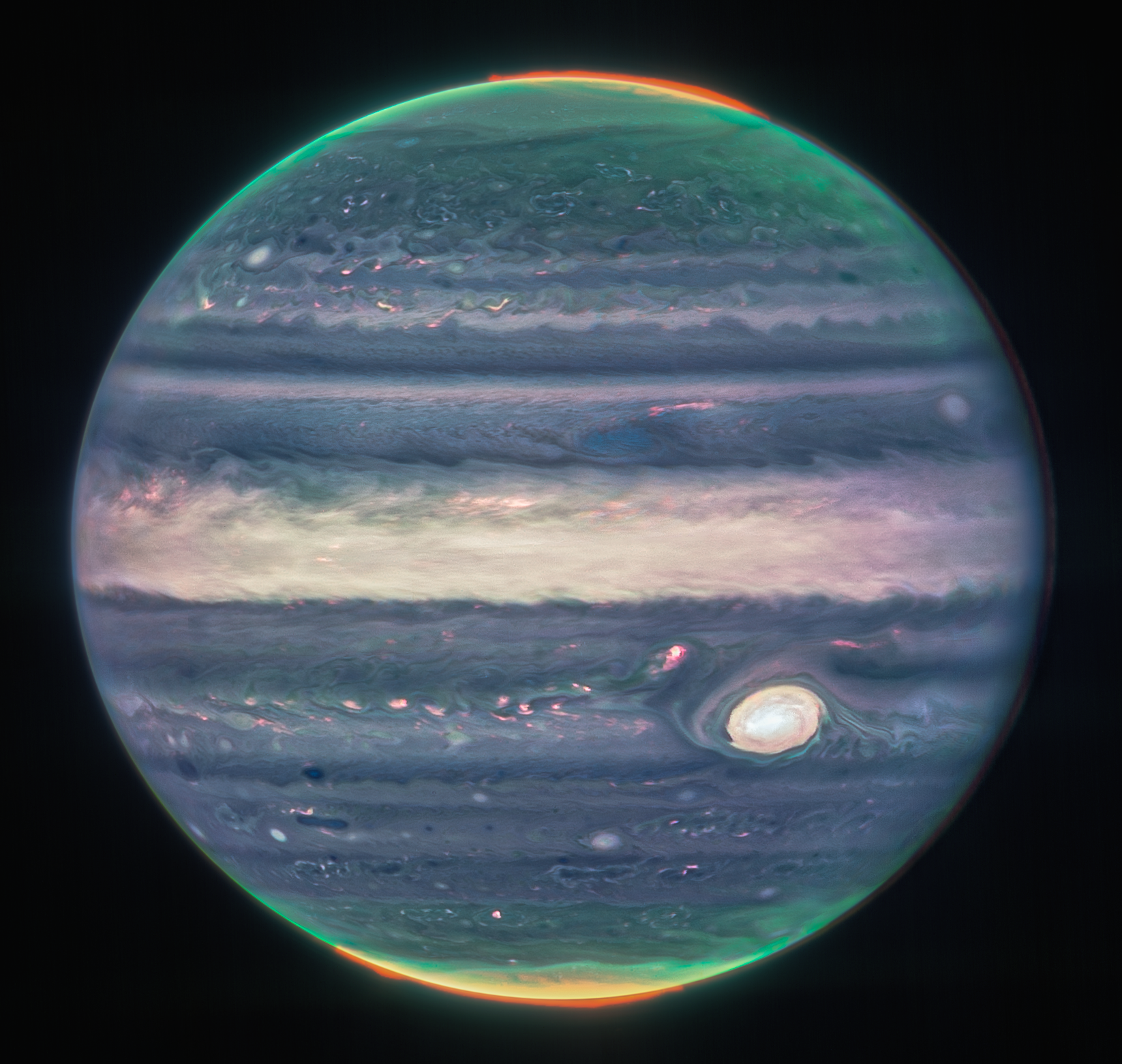I was going to ask how you know what a spear through the head feels like, but I remembered being hit in the head by a javelin once, so I can't judge.No no, I was trying to be all "OOF! You wound me like a spear through the head!" in a jokey way.
What have you learned today?
- Thread starter hanselthecaretaker
- Start date
Recommended Videos
And all this before capitalism too! Almost as if it's not about systems but about those with power vs those without power.

James Webb Space Telescope Archives - NASA Science

Magnif!.
With giant storms, powerful winds, auroras, and extreme temperature and pressure conditions, Jupiter has a lot going on. Now, NASA’s James Webb Space Telescope has captured new images of the planet. Webb’s Jupiter observations will give scientists even more clues to Jupiter’s inner life.
“We hadn’t really expected it to be this good, to be honest,” said planetary astronomer Imke de Pater, professor emerita of the University of California, Berkeley. De Pater led the observations of Jupiter with Thierry Fouchet, a professor at the Paris Observatory, as part of an international collaboration for Webb’s Early Release Science program. Webb itself is an international mission led by NASA with its partners ESA (European Space Agency) and CSA (Canadian Space Agency). “It’s really remarkable that we can see details on Jupiter together with its rings, tiny satellites, and even galaxies in one image,” she said.
The two images come from the observatory’s Near-Infrared Camera (NIRCam), which has three specialized infrared filters that showcase details of the planet. Since infrared light is invisible to the human eye, the light has been mapped onto the visible spectrum. Generally, the longest wavelengths appear redder and the shortest wavelengths are shown as more blue. Scientists collaborated with citizen scientist Judy Schmidt to translate the Webb data into images.
In the standalone view of Jupiter, created from a composite of several images from Webb, auroras extend to high altitudes above both the northern and southern poles of Jupiter. The auroras shine in a filter that is mapped to redder colors, which also highlights light reflected from lower clouds and upper hazes. A different filter, mapped to yellows and greens, shows hazes swirling around the northern and southern poles. A third filter, mapped to blues, showcases light that is reflected from a deeper main cloud.
The Great Red Spot, a famous storm so big it could swallow Earth, appears white in these views, as do other clouds, because they are reflecting a lot of sunlight.
“The brightness here indicates high altitude – so the Great Red Spot has high-altitude hazes, as does the equatorial region,” said Heidi Hammel, Webb interdisciplinary scientist for solar system observations and vice president for science at AURA. “The numerous bright white ‘spots’ and ‘streaks’ are likely very high-altitude cloud tops of condensed convective storms.” By contrast, dark ribbons north of the equatorial region have little cloud cover.
Webb NIRCam composite image from two filters – F212N (orange) and F335M (cyan) – of Jupiter system, unlabeled (top) and labeled (bottom). Credit: NASA, ESA, CSA, Jupiter ERS Team; image processing by Ricardo Hueso (UPV/EHU) and Judy Schmidt.
In a wide-field view, Webb sees Jupiter with its faint rings, which are a million times fainter than the planet, and two tiny moons called Amalthea and Adrastea. The fuzzy spots in the lower background are likely galaxies “photobombing” this Jovian view.
“This one image sums up the science of our Jupiter system program, which studies the dynamics and chemistry of Jupiter itself, its rings, and its satellite system,” Fouchet said. Researchers have already begun analyzing Webb data to get new science results about our solar system’s largest planet.
Data from telescopes like Webb doesn’t arrive on Earth neatly packaged. Instead, it contains information about the brightness of the light on Webb’s detectors. This information arrives at the Space Telescope Science Institute (STScI), Webb’s mission and science operations center, as raw data. STScI processes the data into calibrated files for scientific analysis and delivers it to the Mikulski Archive for Space Telescopes for dissemination. Scientists then translate that information into images like these during the course of their research (here’s a podcast about that). While a team at STScI formally processes Webb images for official release, non-professional astronomers known as citizen scientists often dive into the public data archive to retrieve and process images, too.
Judy Schmidt of Modesto California, a longtime image processor in the citizen science community, processed these new views of Jupiter. For the image that includes the tiny satellites, she collaborated with Ricardo Hueso, a co-investigator on these observations, who studies planetary atmospheres at the University of the Basque Country in Spain.
Citizen scientist Judy Schmidt of Modesto, California, processes astronomical images from NASA spacecraft, such as the Hubble Space Telescope. An example of her work is Minkowski’s Butterfly, right, a planetary nebula in the direction of the constellation Ophiuchus.
Schmidt has no formal educational background in astronomy. But 10 years ago, an ESA contest sparked her insatiable passion for image processing. The “Hubble’s Hidden Treasures” competition invited the public to find new gems in Hubble data. Out of nearly 3,000 submissions, Schmidt took home third place for an image of a newborn star.
Since the ESA contest, she has been working on Hubble and other telescope data as a hobby. “Something about it just stuck with me, and I can’t stop,” she said. “I could spend hours and hours every day.”
Her love of astronomy images led her to process images of nebulae, globular clusters, stellar nurseries, and more spectacular cosmic objects. Her guiding philosophy is: “I try to get it to look natural, even if it’s not anything close to what your eye can see.” These images have caught the attention of professional scientists, including Hammel, who previously collaborated with Schmidt on refining Hubble images of comet Shoemaker-Levy 9’s Jupiter impact.
Jupiter is actually harder to work with than more distant cosmic wonders, Schmidt says, because of how fast it rotates. Combining a stack of images into one view can be challenging when Jupiter’s distinctive features have rotated during the time that the images were taken and are no longer aligned. Sometimes she has to digitally make adjustments to stack the images in a way that makes sense.
Webb will deliver observations about every phase of cosmic history, but if Schmidt had to pick one thing to be excited about, it would be more Webb views of star-forming regions. In particular, she is fascinated by young stars that produce powerful jets in small nebula patches called Herbig–Haro objects. “I’m really looking forward to seeing these weird and wonderful baby stars blowing holes into nebulas,” she said.
So they’re taking cues from government practices I guess -
 www.tomshardware.com
www.tomshardware.com
Samsung Germany RMA Suggests Drilling or Smashing The SSD With a Hammer
Not your ordinary RMA request.
"Dust off, nuke the site from orbit. It's the only way to be sure!"So they’re taking cues from government practices I guess -
Samsung Germany RMA Suggests Drilling or Smashing The SSD With a Hammer
Not your ordinary RMA request.www.tomshardware.com
I learned you can hack your cholesterol results if you eat a high fat and high calorie diet for about 3 days before your blood test, you'll drop your LDL cholesterol so you'd get lower life insurance payments or not get your doctor telling you that you need to take a statin.
Yeah... that's not true, shocker.Huh, neat
Defeated by hyperlinks yet again, I seeI learned you can hack your cholesterol results if you eat a high fat and high calorie diet for about 3 days before your blood test, you'll drop your LDL cholesterol so you'd get lower life insurance payments or not get your doctor telling you that you need to take a statin.
Yeah... that's not true, shocker.
Or you could, you know, do the work and figure out why it's wrong on your own by looking at the data. The data ignores the fact that if you're overweight, your risk for a vast amount of different medical problems is increased, thus the overweight people are experiencing more medical problems total. Your study/data only looked at how well the patient did after experiencing said medical problem and they did better because overweight people have said medical problems earlier in life and thus do better with said problem because they're younger. It's like saying that being overweight is the reason younger people had better covid outcomes than the elderly as the obesity rate in the elderly is lower than in young adults. Not saying you can't be healthy when overweight, but the vast vast vast majority of overweight people are not overweight in a healthy manner, they ingesting garbage foods like pop and french fries eating that horribly unhealthy standard American diet (SAD).Defeated by hyperlinks yet again, I see
And if you want hyperlinks, well here you go:

Study of BMI, Death Rates Over Time Debunks "Obesity Paradox"
The new study shows that looking at a person's body mass index over an extended period gives a fuller picture of the relationship between excess weight and mortality.
Coca-Cola is peddling this nonsense science...

The obesity paradox: Why Coke is promoting a theory that being fat won’t hurt your health
Vox is a general interest news site for the 21st century. Its mission: to help everyone understand our complicated world, so that we can all help shape it. In text, video and audio, our reporters explain politics, policy, world affairs, technology, culture, science, the climate crisis, money...
Sorry man, healthy overweight person is better off than an unhealthy skinny person

 www.ccjm.org
www.ccjm.org
Given that crash dieting and yo-yo dieting are worse than just staying fat *and* significant weight loss only seems to stick for about 1 in 20 people, a "eat good and exercise even if you don't lose weight" Healthy At Any Size approach would be best, yeah? Instead of shaming and a billion dollar weight loss industry?

The obesity paradox in heart failure: What is the role of cardiorespiratory fitness?
The obesity paradox describes a survival benefit for higher body mass index in patients with heart failure. But other factors like cardiorespiratory fitness may play a role in heart failure development, severity, and survival. Although more research is needed to better understand the...
Given that crash dieting and yo-yo dieting are worse than just staying fat *and* significant weight loss only seems to stick for about 1 in 20 people, a "eat good and exercise even if you don't lose weight" Healthy At Any Size approach would be best, yeah? Instead of shaming and a billion dollar weight loss industry?
The 1st key finding from your link is "Obesity increases the risk of developing heart failure regardless of fitness level". The fact the more overweight people are getting heart failure means their overall health is worse even if they do better when said heart failure happens, the goal is not to get heart failure, not be better at surviving it. Man, you guys switch principles so fast when it's in your best interest, we can't let anyone get covid and gotta reduce spread/infections, but yeah people should be overweight and be at higher risk for heart failure, that logic so very consistent!!!Sorry man, healthy overweight person is better off than an unhealthy skinny person

The obesity paradox in heart failure: What is the role of cardiorespiratory fitness?
The obesity paradox describes a survival benefit for higher body mass index in patients with heart failure. But other factors like cardiorespiratory fitness may play a role in heart failure development, severity, and survival. Although more research is needed to better understand the...www.ccjm.org
Given that crash dieting and yo-yo dieting are worse than just staying fat *and* significant weight loss only seems to stick for about 1 in 20 people, a "eat good and exercise even if you don't lose weight" Healthy At Any Size approach would be best, yeah? Instead of shaming and a billion dollar weight loss industry?
The point is your diet should be part of your permanent lifestyle and not something you just go on and off so yeah, it wouldn't be surprising if constantly going on and off diets is bad for you because people tend to do extreme things on diets vs just eating properly, it's not rocket science, just don't eat garbage foods and you'll be fine. My one friend (who's in healthcare and should know better) wanted to do some extreme fasting thing and is like I can't do any of this or I can't go out Friday because I can't eat anything, and I'm like don't do something you're just setting yourself up for failure and then feel even worse about yourself because it didn't work. The KISS method works for most things.
Of course the most nightmarish thing known to man would sound like the stuff of nightmares.Le space!
I'd be a hell of a lot more spooked if it sounded like a chorus of angels or something.Of course the most nightmarish thing known to man would sound like the stuff of nightmares.
The suggestion that Hell might actually exist is more terrifying than the idea that Heaven might exists? What kind of existential crisis are you going through? Because there's a reality TV show ripe for the picking there if you wanna make a quick buck before slitting your wrists.I'd be a hell of a lot more spooked if it sounded like a chorus of angels or something.
Well, to me Hell would be more "agonized wailing" than "deep wind blowing", but I'll ask what are you more comfortable with: Hell being one sextillion miles away, or Heaven being one sextillion miles away?The suggestion that Hell might actually exist is more terrifying than the idea that Heaven might exists? What kind of existential crisis are you going through? Because there's a reality TV show ripe for the picking there if you wanna make a quick buck before slitting your wrists.
I dunno man, rock and rolling all night and partying every day sounds like it would lead to some pretty serious health issues.The KISS method works for most things.


